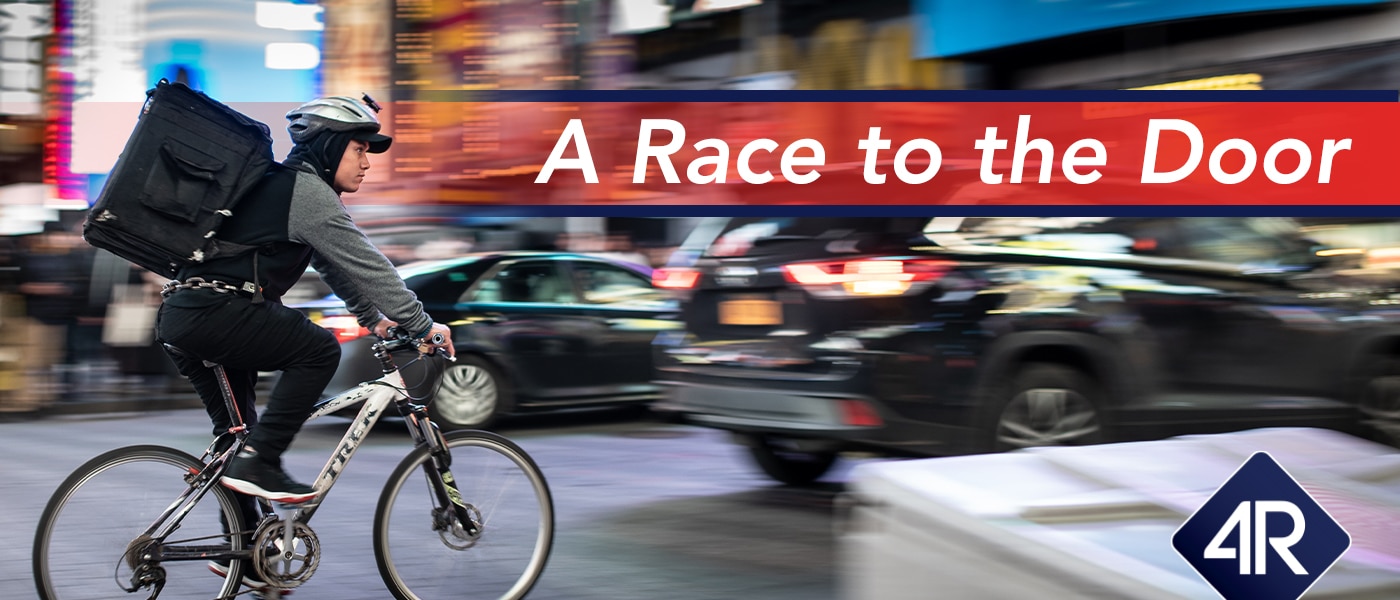Every major brand is in a race to find innovative ways to ship products to their customers. Fueled by the pandemic and the growing importance of convenience for consumers, retailers, grocery stores, restaurants, and other brands are faced with increased pressure and competition to offer faster delivery times. Some brands are leveraging advanced technology and robotics, while others are experimenting with third-party delivery and BOPIS, or curbside pickup. Here are three observations on growing delivery trends in the retail, eCommerce, and grocery markets.
1. Deliver on Expectations First
Delivery is important, but it’s important to remember why. Simply put, it’s what the market wants today. During the pandemic, many consumers wanted safer and alternative shopping methods. With government restrictions easing up and the number of vaccinated consumers rising, many businesses are opening back up to greater degrees. However, it seems consumers still highly value the convenience of delivery options.
Meeting customer expectations should always be the top priority of any new initiative. Today, that means offering a myriad of ways for customers to browse, shop, and receive products. Delivering a great customer experience means brands must find solutions for every customer delivery expectation, regardless of the product being sold. Not to mention, when delivery orders aren’t holding up to customer expectations, they can have very negative consequences for brands.
While delivery is important, so is creating personalized experiences. A recent report showed that 75 percent of retailers say personalizing in-store experiences based on online behaviors will be an important aspect of meeting customer expectations in 2021. Your customers want to feel valued and appreciated. They want a tailored experience, whether they are shopping online or in-person. Offering multiple delivery and pickup options is part of delivering on that expectation.
2. Last-Mile Innovations
Some major companies are starting to pour investments into new technologies. Businesses like Amazon, Target, Google, Dominos, and even UPS are experimenting with autonomous and same-day delivery options. The idea being that self-driving vehicles, drones, and even delivery robots can help decrease the time and costs of getting the final product to the customers’ doorsteps.
At the same time, new companies popping up in Europe and in dense urban areas in the U.S. are offering 15-minute delivery options. The general approach of these new businesses is to have dark stores and fulfillment centers that are strategically located. The locations are stocked with their own inventory. Each location is then staffed with order-pickers who hand orders off to delivery drivers. These companies are careful about how far customers can be located in order to use the service, as there are no delivery fees or limits on order quantities. Some of these companies are even using bicycles in urban areas as their mode of transportation.
3. Impact of Delivery on Assortment and Replenishment Planning
Offering newer and faster delivery methods is influencing consumer behavior. For example, 15-minute deliveries will drastically change how people shop. Instead of planning ahead for your weekly meals, you can wait until it is nearly dinner time before ordering groceries. If you have a home renovation, you can just order the supplies while you eat breakfast the morning you start on the project. This completely changes the existing model of needing to plan ahead for grocery and other store trips.
As delivery times get shorter, brands should be cautious as this can put a major strain on supply chains. You have to make sure your assortments are dialed in, or else you risk losing orders to competitors. Also, replenishment strategies will likely need to shift to accommodate such quick turnover for top-selling items and brands. Ensure you have a strong assortment optimization solution and replenishment solution in place, like the ones offered by 4R Systems. That way, your inventory will always be fine-tuned, and you can reduce the likelihood of out-of-stocks, all while improving margins.
Finding solutions to help brands get their products to consumers faster is a race where the rules seem to keep changing. It’s tempting to disrupt existing operations to implement new technology, so your business doesn’t lag behind competitors. However, the most effective supply chain solutions blend new technologies with supply chain principles that have worked for decades, even in spite of disruptions. Assortment optimization and replenishment solutions should work within your existing systems without disrupting business operations. The result is a technology that empowers brands to win in the race to the customer’s door.


